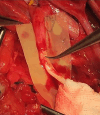Patient-reported Outcomes Following Intercostal Nerve Transfer to Musculocutaneous Nerve at a Median Follow-up of 3.5 Years
- PMID: 40771262
- PMCID: PMC12327579
- DOI: 10.1097/GOX.0000000000006969
Patient-reported Outcomes Following Intercostal Nerve Transfer to Musculocutaneous Nerve at a Median Follow-up of 3.5 Years
Abstract
Background: The objective of this study was to evaluate the outcomes of neurotization of the musculocutaneous nerve (MCN) using intercostal nerves (ICNs) to restore elbow flexion in patients with complete brachial plexus paralysis (CBPP). We assessed quality of life through patient-reported outcome measures and examined the impact on respiratory function.
Methods: This retrospective study included 17 patients with CBPP who underwent ICN transfer to the MCN. The median follow-up was 3.5 years. Outcome measures included elbow flexion strength (British Medical Research Council grading), quality of life (Quick Disabilities of the Arm, Shoulder, and Hand and Short Form-36), and respiratory function. Patient-reported outcome measures were evaluated using the Overall Subjective Self-Assessment score.
Results: The median age at the time of injury was 24 years (interquartile range: 19-28 y). Seven (41%) patients achieved elbow flexion strength of M3 or higher. The median active elbow flexion was 120 degrees in patients with strength of M3 or higher, compared with 25 degrees in those with strength less than M3 (P < 0.001). The median Quick Disabilities of the Arm, Shoulder, and Hand score was 68 for patients with strength of M3 or higher and 84 for those with strength less than M3 (P = 0.04). The Short Form-36 score showed a median of 58 for patients with strength of M3 or higher and 47.5 for those with strength less than M3 (P = 0.14). No significant changes in respiratory function were observed.
Conclusions: Neurotization of the MCN with ICN in patients with CBPP can restore functional elbow flexion and improve quality of life without adversely affecting respiratory function. Although improvements remain modest, the restored elbow flexion significantly enhances upper limb function, supporting its continued use as a viable treatment option in the management of CBPP.
Copyright © 2025 The Authors. Published by Wolters Kluwer Health, Inc. on behalf of The American Society of Plastic Surgeons.
Conflict of interest statement
The authors have no financial interest to declare in relation to the content of this article.
Figures
Similar articles
-
Gracilis Free Flap Technique for Elbow Flexion Reconstruction.JBJS Essent Surg Tech. 2025 Jul 17;15(3):e25.00003. doi: 10.2106/JBJS.ST.25.00003. eCollection 2025 Jul-Sep. JBJS Essent Surg Tech. 2025. PMID: 40678176 Free PMC article.
-
Bioengineered nerve conduits and wraps for peripheral nerve repair of the upper limb.Cochrane Database Syst Rev. 2022 Dec 7;12(12):CD012574. doi: 10.1002/14651858.CD012574.pub2. Cochrane Database Syst Rev. 2022. PMID: 36477774 Free PMC article.
-
What Are the Recurrence Rates, Complications, and Functional Outcomes After Multiportal Arthroscopic Synovectomy for Patients With Knee Diffuse-type Tenosynovial Giant-cell Tumors?Clin Orthop Relat Res. 2024 Jul 1;482(7):1218-1229. doi: 10.1097/CORR.0000000000002934. Epub 2023 Dec 28. Clin Orthop Relat Res. 2024. PMID: 38153106 Free PMC article.
-
Delayed nerve reconstruction for brachial plexus injuries: is the risk worth the reward?J Neurosurg. 2023 Oct 20;140(4):1102-1109. doi: 10.3171/2023.8.JNS23803. Print 2024 Apr 1. J Neurosurg. 2023. PMID: 37862720
-
Nutritional interventions for survivors of childhood cancer.Cochrane Database Syst Rev. 2016 Aug 22;2016(8):CD009678. doi: 10.1002/14651858.CD009678.pub2. Cochrane Database Syst Rev. 2016. PMID: 27545902 Free PMC article.
References
-
- Brophy RH, Wolfe SW. Planning brachial plexus surgery: treatment options and priorities. Hand Clin. 2005;21:47–54. - PubMed
-
- Lee SK, Wolfe SW. Nerve transfers for the upper extremity: new horizons in nerve reconstruction. J Am Acad Orthop Surg. 2012;20:506–517. - PubMed
-
- Kang GHY, Lim RQR, Yong FC. Elbow flexion reconstruction in brachial plexus avulsion injuries—results with intercostal nerve and distal nerve transfers. J Hand Surg Asian Pac Vol. 2020;25:307–314. - PubMed
-
- De Mendonça Cardoso M, Gepp R, Lima FL, et al. Intercostal to musculocutaneous nerve transfer in patients with complete traumatic brachial plexus injuries: case series. Acta Neurochir. 2020;162:1907–1912. - PubMed
LinkOut - more resources
Full Text Sources



